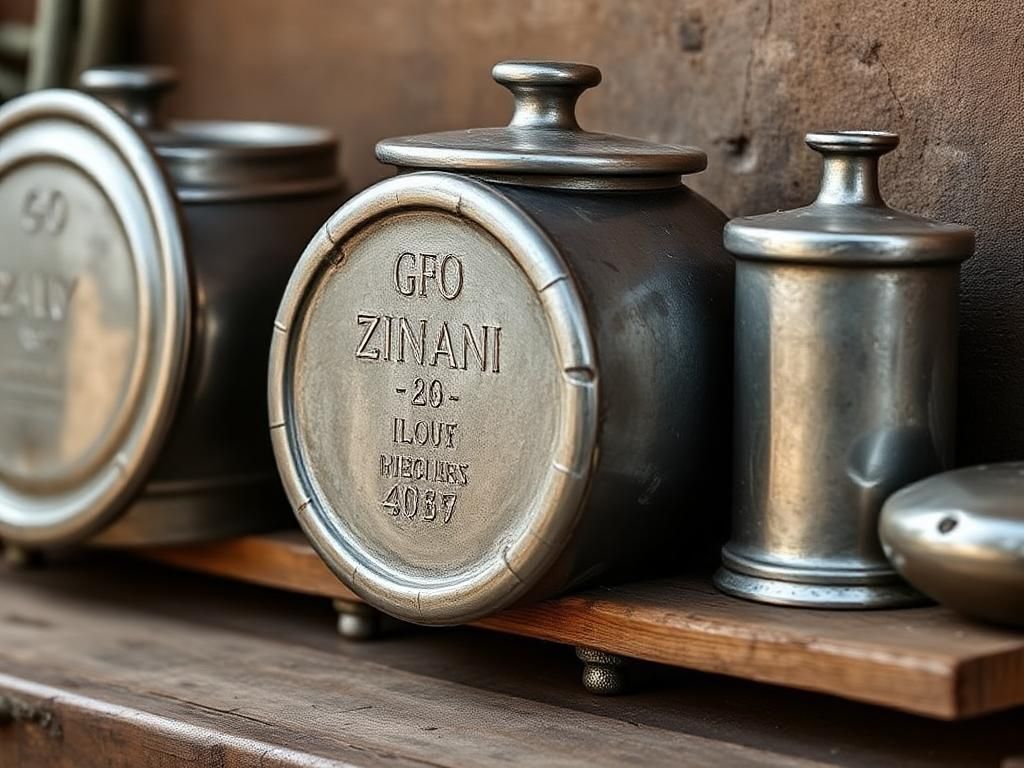Zinc alloy is a versatile and commonly used material due to its unique properties and cost-effectiveness. Understanding whether does zinc alloy tarnish is crucial for maintaining the aesthetic and structural integrity of items made from this material. This article will dive deep into the composition of zinc alloy, how tarnishing occurs, the factors involved, and how to care for your zinc alloy items to ensure they last.
What is Zinc Alloy?
Composition of Zinc Alloy
Zinc alloy comprises primarily zinc, a metal known for its corrosion resistance. The alloying elements often found in zinc alloy include aluminum, copper, and magnesium. These additions enhance the mechanical properties of zinc, making it suitable for a wide range of applications including jewelry, automotive parts, and die casting. The diverse composition allows zinc alloy to be tailored for specific performance needs.
Properties of Zinc Alloy
Zinc alloy possesses several distinctive properties:
– **Corrosion Resistance**: Zinc naturally protects against rust and corrosion, making it ideal for outdoor and industrial applications.
– **Strength and Durability**: Combining zinc with other metals enhances its strength, making it durable in various environments.
– **Lightweight Characteristics**: Compared to other metals, zinc alloy is relatively lightweight, thus it is favored in manufacturing processes.
Understanding Tarnish
What is Tarnish?
Tarnish refers to the layer of corrosion that forms on metals, altering their appearance. It results primarily from chemical reactions with elements in the environment, such as oxygen, resulting in a dull film covering the original surface. The process differs from corrosion, which generally involves the degradation of metal through a more aggressive chemical reaction.
Causes of Tarnishing
Several factors contribute to the tarnishing of zinc alloy:
– **Exposure to Moisture and Air**: High humidity and atmospheric conditions can accelerate tarnishing.
– **Chemical Reactions with Pollutants**: Contaminants in the air, such as sulfur and other pollutants, can react with the surface of zinc alloy.
– **Contact with Skin Oils and Cosmetics**: Regular handling can lead to residue build-up from skin oils and products, which may contribute to tarnish formation.
Does Zinc Alloy Tarnish?
Factors Affecting Tarnishing in Zinc Alloy
Whether zinc alloy tarnishes depends on several variables:
– **Alloy Composition Variations**: Different compositions can affect how prone the material is to tarnishing. For example, zinc alloys with higher copper content might tarnish more than those with higher aluminum content.
– **Environmental Conditions**: Humidity levels and temperature variations play a critical role in tarnishing acceleration.
– **Presence of Protective Coatings**: Items that are coated with protective finishes are less prone to tarnishing compared to untreated alloys.
Comparison with Other Metals
When examining whether does zinc alloy tarnish, it is important to compare it to other metals:
– **Silver**: Tarnishes fairly quickly, turning black when exposed to sulfur.
– **Copper**: Develops a patina over time, which is often considered aesthetically pleasing.
– **Brass**: Similar to copper, it tarnishes relatively easily.
– **Aluminum Alloys**: Known to resist tarnishing better than zinc alloys but still can display signs of wear.
Signs of Tarnishing in Zinc Alloy
Visual Indicators
If you suspect your zinc alloy item may be tarnishing, watch for these visual signs:
– **Color Changes**: Initially shiny surfaces may develop a grayish or dull appearance.
– **Surface Dullness**: The metallic luster fades, indicating that tarnish is forming.
– **Darkened or Spotted Areas**: Irregular spots may appear, indicating localized tarnishing.
Texture Changes
In addition to visual signs, the texture may also change, characterized by:
– **Roughness or Pitting on the Surface**: This can occur as tarnish develops and may lead to further degradation.
– **General Degradation of Smoothness**: The surface may feel less smooth, which can impact aesthetics and functionality.
Preventing Tarnishing in Zinc Alloy
Protective Coatings
Applying a protective coating can significantly deter tarnishing. Options include:
– **Lacquer**: Provides a barrier against air and moisture.
– **Plating**: Coatings of other metals can prevent tarnishing.
– **Anodizing**: This process enhances corrosion resistance and promotes durability.
Proper Storage Practices
To maximize the lifespan of your zinc alloy items, consider these storage recommendations:
– **Airtight Containers**: Store items in airtight conditions to prevent moisture exposure.
– **Avoiding Contact with Harmful Substances**: Keep away from chemicals and cosmetics that may accelerate tarnishing.
Regular Cleaning and Maintenance
Maintaining your zinc alloy items is key to preventing tarnish:
– **Recommended Cleaning Methods**: Using gentle soap and water is advisable to avoid harsh chemicals.
– **Frequency of Maintenance**: Regular inspections every few months can help catch early signs of tarnish.
Cleaning Tarnished Zinc Alloy
DIY Cleaning Solutions
For those who have noticed tarnishing on their items, several DIY methods can help.
Consider these natural cleaning solutions:
– **Vinegar**: The acidity helps remove tarnish.
– **Baking Soda**: This gently exfoliates the surface.
Commercial cleaning products specifically designed for metal care can also be effective.
Step-by-step Cleaning Process
Here’s a simple method to clean your tarnished zinc alloy items:
– **Preparation for Cleaning**: Gather your cleaning materials including mild soap, water, a soft cloth, vinegar, or baking soda.
– **Cleaning Methods to be Employed**: Dampen the cloth with soapy water; gently wipe the surface. For stubborn spots, create a paste of baking soda and water, apply it, let it sit, and then buff away.
– **Drying and Post-cleaning Care**: Ensure the item is dried thoroughly to prevent moisture retention.
Conclusion
Understanding whether does zinc alloy tarnish is critical for owners of this versatile material. The properties of zinc alloy make it an excellent choice for various applications, but proper maintenance is required to achieve longevity and aesthetic appeal. By recognizing the signs of tarnishing, employing preventive measures, and practicing regular cleaning routines, you can keep your zinc alloy items looking attractive and functional.
Additional Resources
If you’re keen to learn more about maintaining your metal items, consider these additional resources:
– [The Essential Guide on Metal Care](https://www.metalsupermarkets.com/)
– [Professional Restoration Services](https://www.restorationhardware.com/)
FAQs
Can polished zinc alloy tarnish?
Yes, polished zinc alloy can tarnish over time, though it may take longer than untreated surfaces due to the smoother finish.
How long does it take for zinc alloy to tarnish?
The timeframe can vary based on environmental conditions, but noticeable tarnishing may occur within weeks to months.
Is tarnishing dangerous or harmful?
No, tarnishing itself is not harmful, but it can affect the appearance of your items.
Can tarnishing be reversed?
Yes, with proper cleaning, tarnished zinc alloy can be restored to its original appearance.
What cleaning products should I avoid?
Avoid harsh chemicals like bleach or abrasive cleaners, as they may further damage the zinc alloy surface.
How often should I clean my zinc alloy items?
Regular cleaning every few months, or immediately after exposure to moisture or chemicals, is ideal to prevent tarnishing.
What is the best way to store zinc alloy to prevent tarnishing?
Store in a dry, airtight environment and avoid contact with body oils, perfumes, and other harsh substances.
Are there specific brands of cleaners recommended for zinc alloy?
Look for cleaners specifically labeled for metal care, or try natural remedies for a safer approach.
Does exposure to salt water affect zinc alloy?
Yes, exposure to salt water can accelerate the tarnishing process due to its corrosive nature.
Table Summary of Zinc Alloy Tarnishing Factors
| Factor | Description | Impact on Tarnishing |
|---|---|---|
| Alloy Composition | Presence of elements like copper can lead to more rapid tarnishing | Higher tarnish rate with certain compositions |
| Environmental Conditions | Humidity and temperature fluctuations | Increases oxidization and tarnishing likelihood |
| Protective Coatings | Coatings like lacquer or plating to protect surfaces | Helps minimize tarnishing effects |
| Exposure to Chemicals | Interaction with pollutants and skin oils | Accelerates tarnishing process |


